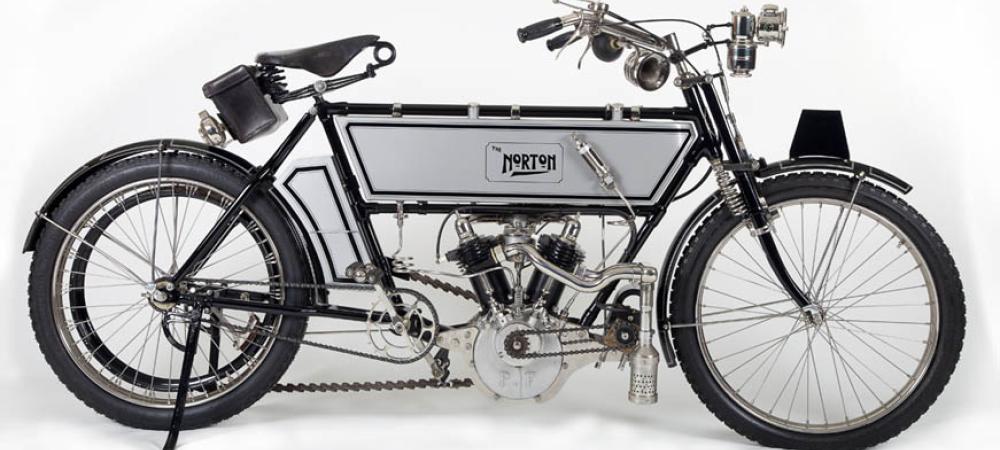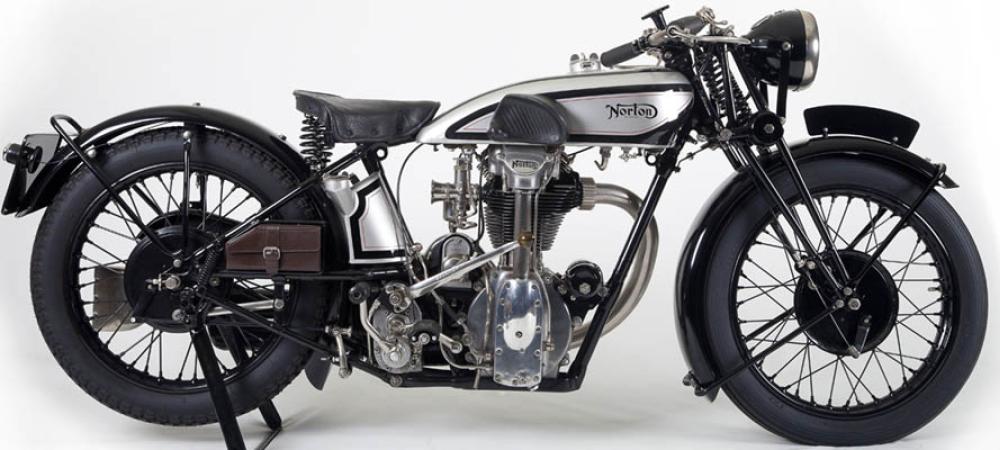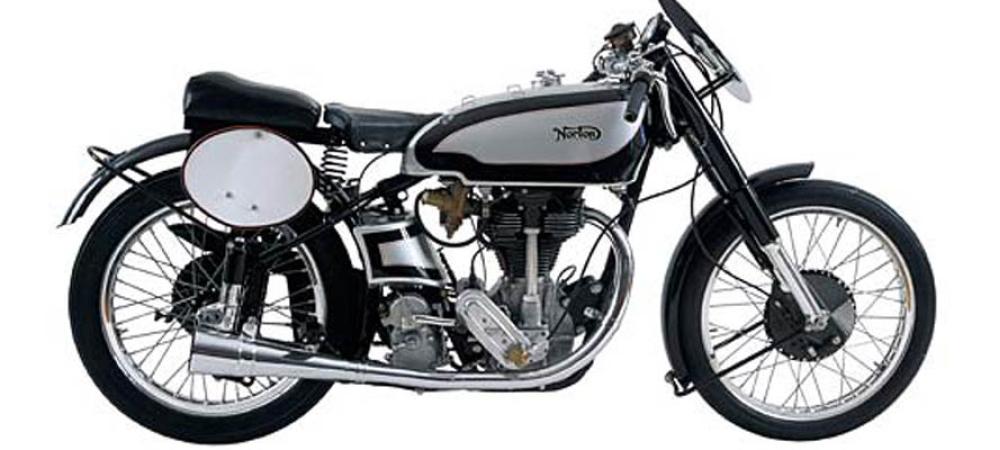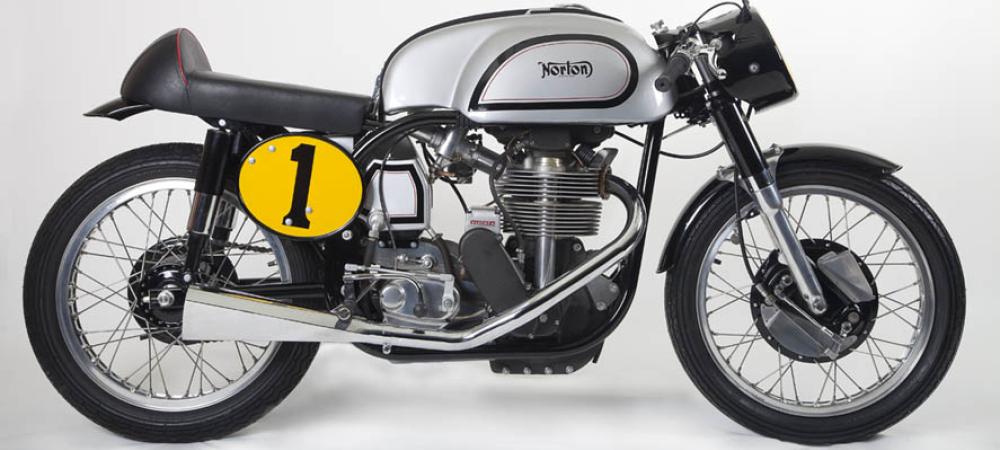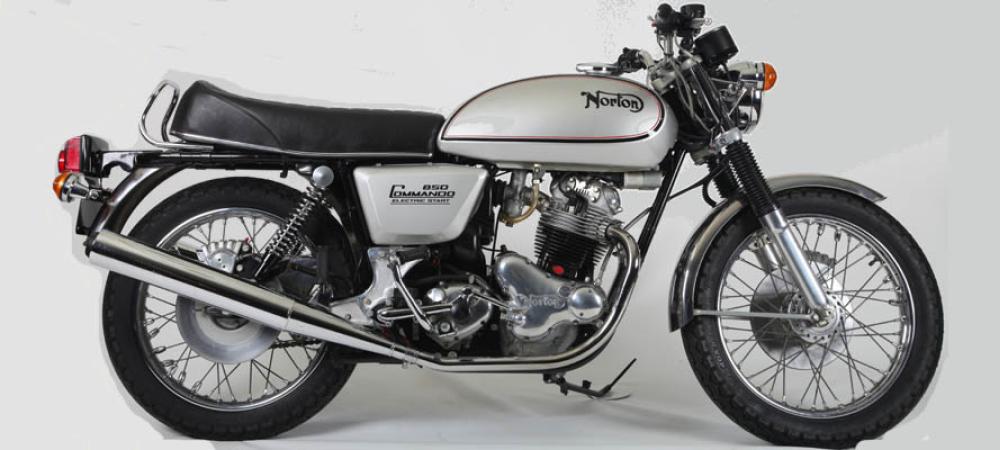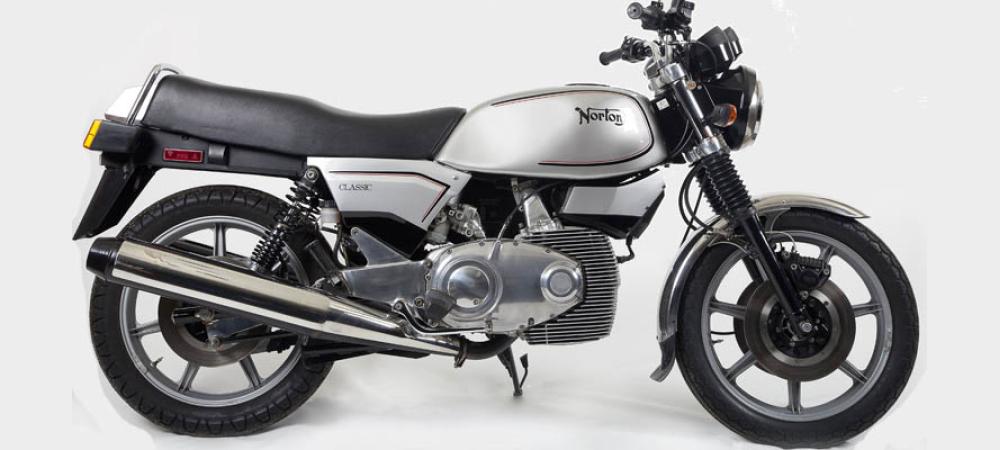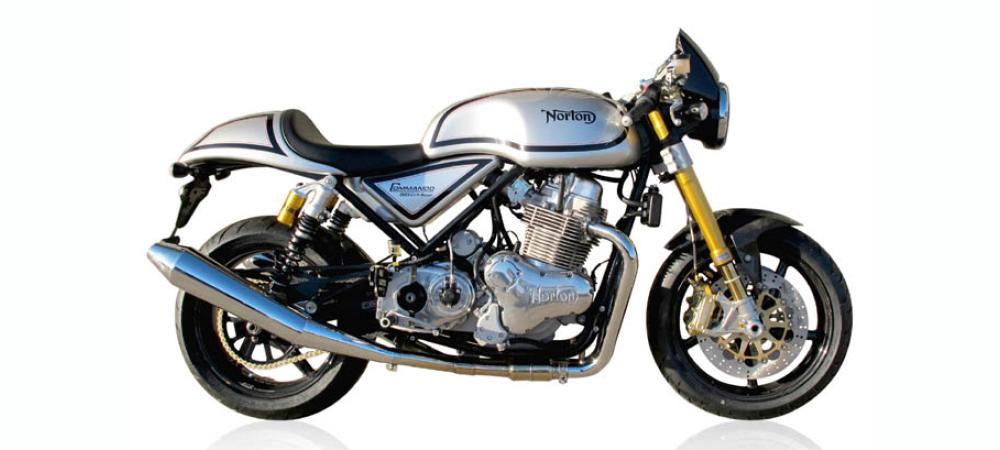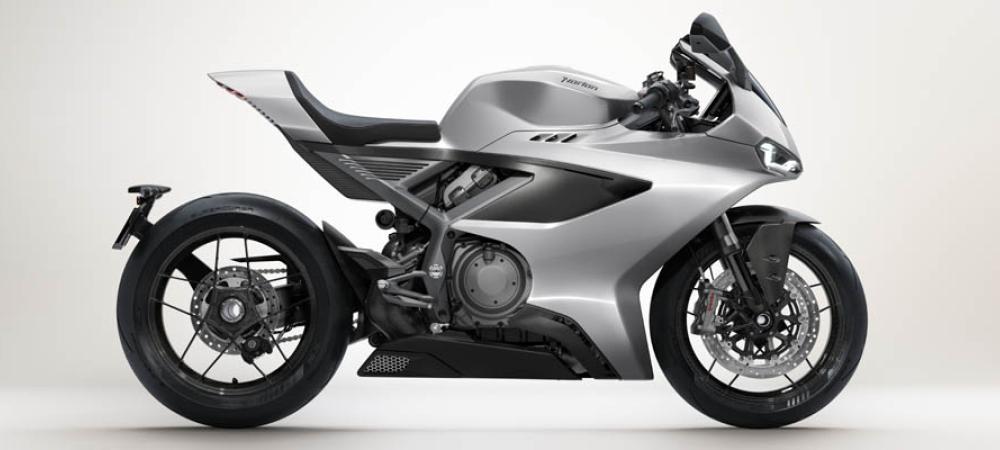A review of correspondence from NOC-L
A discussion on the oil pressure to be expected on a Commando and the merits (or otherwise) of fitting an oil pressure gauge
What is the typical oil pressure on a Commando?
I fitted a Stewart-Warner mechanical oil pressure gauge to my 1972 Norton with the oilfeed supply tapped off the left inlet rocker spindle cover. The gauge read between 20-30 p.s.i. @ 1500-4000 revs. I had expected to see something on the order of 50-70 p.s.i. I used the factory recommended Castrol 20/50 oil. Is this reading normal for rocker feed pressure?
Paul O'Neil (hudson29@aol.com) on NOC-L 28th. Aug 1997
Oil pressure gauges on Commandos tell you very little
If you read the appropriate section in the Service Notes you'll find the opinion that use of such a gauge is somewhere between a bad and terrible idea. Not only is it useless once the motor is warmed up, because most of the oil from the pump is doing its work on the bottom end and only a trickle is coming up to the rockers. If it breaks, you might not notice until you've lost your top end.
John S. Morris (jsm@mediaone.net) on NOC-L 28th. Aug 1997
Typical Commando oil pressures
I have used an oil pressure gage on my 1973 850cc Commando for the past eight years. I have shimmed the pressure release valve in the timing cover to give the following oil pressure reading which has worked quite well for me all these years. Using 20W50 oil I get 60 p.s.i. at start up cold at idle. After the oil warms up it drops to around 20 p.s.i . again at idle. At 3500 to 4000 r.p.m. I get the recommended 35 p.s.i. which is as good as it gets. Also with the motor warmed the oil pressure is around 10 p.s.i. Experiment with the pressure relief valve until you are satisfied with the pressure. Since oil is hydraulic in nature, the pressure to the top end will be the same as through the bottom end.
Captain Commando (us850@aol.com) on NOC-L 29th. Aug 1997
Oil pressure gauges are of some use
I beg to differ with John S. Morris. I fitted a gauge to my 850cc Interstate 13 years ago after reading in Norton News how Brian Slark and Pete Kogut highly recommended the installation. Since then I have been saved from near disaster twice by having an oil pressure gauge installed, once on the 850 and once on my race bike.
On the 850, I had installed a new crankshaft oil seal in the timing cover while having the cover off to adjust the cam chain prior to a 3000 mile trip to B.C., Canada. The weekend before leaving, the seal blew out having been one of the defective ones that are still out there being sold by some shops. I knew when it blew immediately when my normal 35 p.s.i. dropped to zero.
Gary Slabaugh (gdslabaugh@sprintmail.com) on NOC-L 29th. Aug 1997
To gauge or not to gauge?
From the Commando Service Notes of the Norton Owners Club (without permission)
[If he does it again, we will start litigation! - Editor]
|
"Mention of pressure brings me to another point -- the fitting of oil pressure gauges. On the Commando (and for similar reasons, most bikes) an oil pressure gauge is more of a liability than an asset. It is of necessity, fitted on the feed side where any failure of pipe or gauge is disastrous to engine and rider -- it's touch and go whether the engine seizes before or after you fall off with oil on the back wheel. The other reason that a pressure gauge isn't much good is really twofold. At high speeds and high oil temperatures the pressure can drop to nothing on the gauge because the pump can hardly keep up with the rate the stuff is flying out of the big ends. The centrifugal force can keep the pressure at the big ends above the danger point, so there's no real panic -- but the gauge would inspire you with horror. Then of course if you did seize an oil pump, by the time you noticed that the pressure had dropped, the big ends would have gone." |
I understand the value on a race bike. My experience with a gauge on the rocker feed was that once the motor was warmed up, the gauge barely registered pressure, but I am glad to hear that others have found them useful.
John S. Morris (jsm@mediaone.net) on NOC-L 30th. Aug 1997
Are these oil pressure readings typical?
I rode my 1972 Commando today for the first time in five years. With Castrol GTX 20/50 and an ambient temp. of about 86oF, the motor initially developed 30 p.s.i. By the end of a 30 minute ride, I had no (0 p.s.i.) at idle and only about 10 p.s.i. on the road. This is measured from the intake rocker end plate by a new Stewart-Warner gauge.
The pump has been attended to by Nortech, who installed the anti wet sump modifications. This certainly seems frightening to me, as I expected 50 p.s.i. or so with little drop off on my fresh motor. But, I have heard Norton oil pressure can be erratic, and I was getting good return to the tank, and the motor ran happily enough, so I didn't unduly panic.
What is 'normal' for these beasts at the rocker cover? If that pressure is indeed low, how do I check it properly? I assembled the oil pressure relief valve as it came apart, having no other info to go by. Is there a specification, and how are they properly set up?
Paul O'Neil (hudson29@aol.com) on NOC-L 2nd. Sep 1997
Higher oil pressures than others have reported; possible reasons for low pressure
I broke in a fresh 850 motor with a pressure gauge attached, fed from the l.h.s. rocker spindle. Using straight 50 oil, I got an initial pressure of 60 p.s.i., which decreased to about 30 p.s.i. after a few minutes of operation; and 15 p.s.i. at a hot idle.
Your readings seem a little low. Is that little rubber pump seal properly installed? Is the gauge ok? Is the nylon hose that feeds the gauge properly routed? Is the sending unit internally clean and free of debris? Your oil pressure is sufficiently high if you loosen the banjo bolt in the head slightly and oil will squeeze by in large quantities, sort of a pedestrian but workable way to get some peace of mind.
Klaus Kaak (kaak@inforamp.net) on NOC-L 3rd. Sep 1997
More possible causes of low oil pressure
It sure sounds like something is wrong; with Paul O'Neil's oil pressure; it is way too low. I think the tip off is in the 'cold' oil pressure. 30 p.s.i. cold makes me wonder if the oil pressure relief valve is at least partially stuck open, or perhaps it's piston is a little undersize for the bore. Assuming that all the engine rebuild work was done correctly, that rules out obvious things like excessive bearing/journal clearances. The other thing that comes to mind is the oil pump drive; is it fitted with the later multi-start drive worm and gear? If for some reason it uses the earlier Atlas gears, the pump's output capacity would be reduced substantially. (Commandos need the higher capacity because of the direct high pressure feed to the rockers).
Here's another thought: what about the rocker spindles? With the early scrolled spindles, or if the notches in the Commando spindles are oriented the wrong way, far too much oil is passed to the top end. The other thing is the conical seal at the output of the pump. If it were to have fallen off the pump spigot, or was leaking a bit, that could cause problems. It is also worth checking that it is thick enough to actually be seating against the pump body as well as the timing cover. Shims are available.
Greg Kricorissian (grkricor@ccs.carleton.ca) on NOC-L 3rd. Sep 1997
These lower pressures are not unusual !!
To beat a dead horse -- Paul O'Neil's readings are almost exactly what I obtained with an oil gauge on my 'running fine' Mk.lll (and is mentioned as to be expected in the service notes).
John S. Morris (jsm@mediaone..net) on NOC-L 5th. Sep 1997
Some observations on oil pressure variation with temperature
Some time ago I fitted an oil pressure gauge. This provided something else to look at whilst bombing along, and judging by the way the pressure fell off whilst maintaining the legal limit it provided information to do with the way viscosity varies with temperaure for various oils. Not entirely scientific perhaps, but a reasonable basis for comparison. The gauge showed 40 p.s.i. at 70 m.p.h. after 20 miles or so from cold, and after that, if the speed was maintained, dropped variously depending on the oil used.
- GTX 15/50 fell to 32, which was the biggest drop of any of the oils I used
- GTX2, Shell Helix, Penzoil 20/50, Penrite 25/50 showed lesser drops, in that order
So I fitted a thermocouple sender temperature indicator, (i.e. pretty accurate), with the thermocouple about 1 inch below the oil level in the oil tank, which, after a number of journeys told me:-
| Constant 65 m.p.h. | 95°C |
| Constant 70 m.p.h. | 100°C |
| Good belt 100 m.p.h. * | 120°C |
| Around town, air temperature 20°C | 95°C |
| * on private roads, of course | |
I asked the oil companies what happened to multigrades at 120°C +, (given that the oil returned to the tank is a mixture of cooler oil from the sump and hotter oil from the head) and also what temperature oil should be run at. I got no clear reply. However, this produced the information that the oil temperature in a car sump is, desirably, around 85°C. So, this made me decide to put in an oil cooler, and an oil thermostat, with the following results:-
| Constant 65 m.p.h. | 80°C |
| Constant 70 m.p.h. | 85°C |
| Good belt 100 m.p.h. * | 100°C |
| * on private roads again, naturally | |
At 70 m.p.h. the pressure gauge showed 38 p.s.i. without the cooler, and 42 p.s.i. with the cooler, using 25/50 Penrite and 20/50 Penzoil oils. I bought the Hyde oil cooler, which is quite trick, but doubtless the local Japanese scrap shop will provide a cheaper one. Don't skimp on the oil lines - eggs fry well at the temperature the oil reaches - get proper oil line hose which is marked for the purpose. I bought the thermostat from Tony Hayward in the U.K., and it's a bit of a tight fit but just goes in above the gearbox, to which position the pipe runs are reasonable. One pipe required a right angle bend.
To round it all off, I fitted a car accessory temperature gauge on a nice stainless panel which also moved the front of the Mk.lll binnacle forward to more or less in line with the instruments, so it looks good and makes the gold Ulysses badge more prominent, as of course it should be.
Alan Lewer (galanl@actrix.gen.nz)
in the NZNOC Newsletter and July 1997 'Ocker Noccer' (New South Wales Norton Club newsletter)
[See also Fred Eaton's notes on oil pressure at the Old Britts web site

